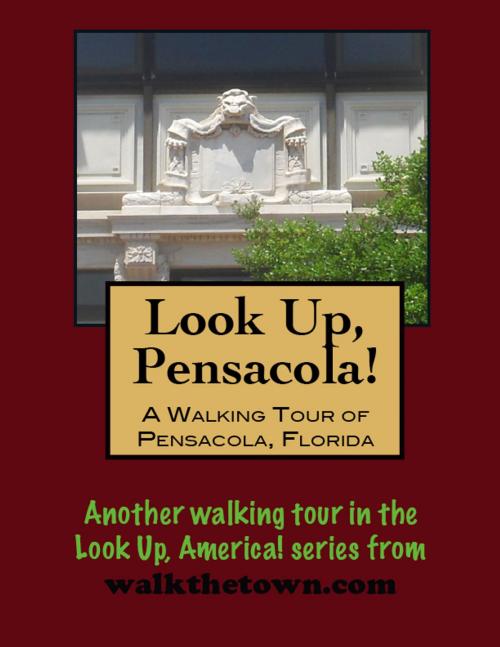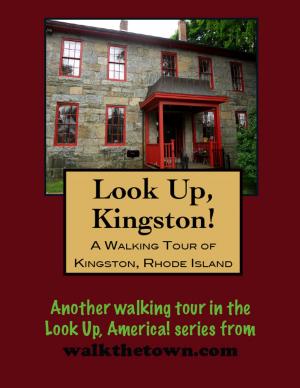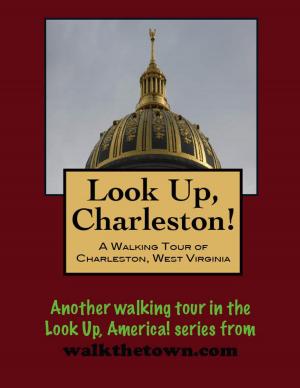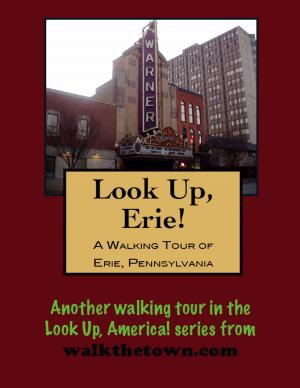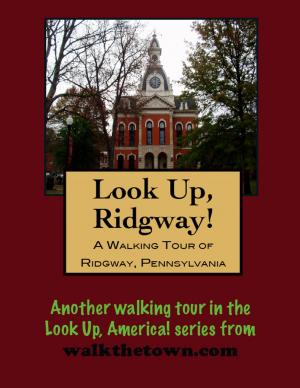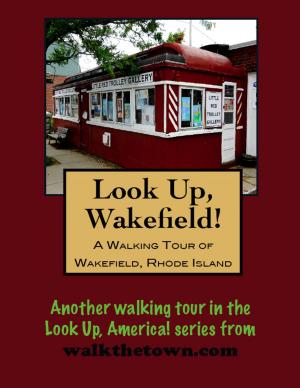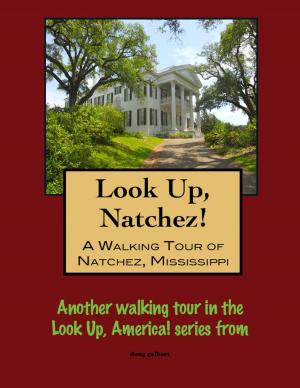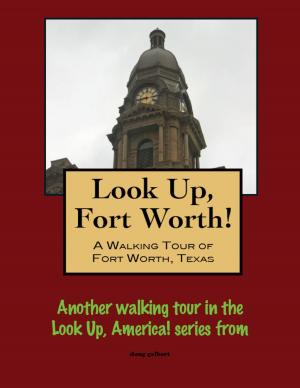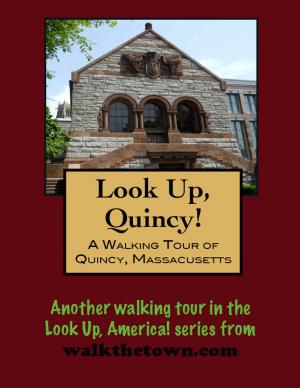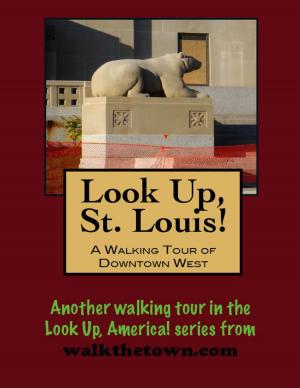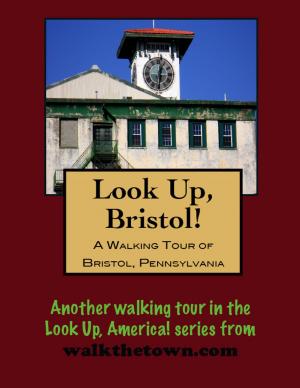| Author: | Doug Gelbert | ISBN: | 9781465857361 |
| Publisher: | Doug Gelbert | Publication: | July 22, 2011 |
| Imprint: | Smashwords Edition | Language: | English |
| Author: | Doug Gelbert |
| ISBN: | 9781465857361 |
| Publisher: | Doug Gelbert |
| Publication: | July 22, 2011 |
| Imprint: | Smashwords Edition |
| Language: | English |
There is no better way to see America than on foot. And there is no better way to appreciate what you are looking at than with a walking tour. Whether you are preparing for a road trip or just out to look at your own town in a new way, a downloadable walking tour is ready to explore when you are.
Each walking tour describes historical and architectural landmarks and provides pictures to help out when those pesky street addresses are missing. Every tour also includes a quick primer on identifying architectural styles seen on American streets.
Pensacola stakes its claim to 450 years and the oldest European settlement in the United States to a 1559 Spanish expedition helmed by Tristan de Luna sailed into Florida's largest land-locked deep-water harbor. Luna brought a fleet of 11 vessels with the purpose of settling the area - in the contingent of 1,500 were many builders and craftsmen, including African and Indian slaves. But only weeks after coming ashore a violent hurricane sunk all but three of the Spanish ships and within two years even the most determined of settlers had abandoned the beleaguered outpost. For the next 140 years the only history made here would be the unrecorded activities of the indigenous peoples who lived here.
Late in the 17th century the French began actively poking around the lower Mississippi River and the Spanish constructed a fort in 1698 to guard the perimeter of their North Americans possessions here. One would be the Spanish construct of Fort San Carlos de Austria that would lay the foundation for what would become Pensacola. Their fears were not unfounded - the presidio would be sacked by the French in 1719. That began a stretch of 100 years where Pensacola would be controlled by the French, then the Spanish, then the English, then the Spanish again and finally, in 1821, the Americans. Andrew Jackson took possession of the Florida Territory for the United States in Pensacola and was made Territorial Governor. Jackson, never comfortable with the Spanish culture, stayed about four months and was back in Tennessee when the first legislative council of the new Territory of Florida convened here in 1822.
Pensacola was early Florida's largest city, although it didn't grow much beyond its treasured port. At the outbreak of the War between the States in 1861, when Confederate troops seized the town it was four blocks wide and about eight deep. In the last decades of the 19th century, after fire gutted the business district in 1880, Pensacola boomed with great stores of timber and lumber shipping out of port and America's greatest catch of red snapper steaming in from the snapper banks of the Yucatan Peninsula.
Pensacola's fabric has been interwoven with the United States military from its earliest days when President John Quincy Adams established a Navy shipbuilding yard on the southern tip of Escambia County to take advantage of the hard and curvy wood of the abundant live oaks that grow there. In 1914 the United States Navy located its first naval aviation training base in Pensacola, bringing tens of thousands of recruits to town. A century later "The Cradle of naval Aviation" is still the town's defining identity.
Another nickname for Pensacola is "The City of Five Flags" for Spain, France, Great Britain, the United States and the Confederate States of America. Of these, our walking tour will encounter the influence of this jumbled heritage. There will be the orderliness of the British street grid and the high balconies and wrought iron railings reminiscent of French settlements west of Florida and cottages constructed in the Spanish Colonial era and we'll start, appropriately, at the spot where Pensacola once changed ruling hands...
There is no better way to see America than on foot. And there is no better way to appreciate what you are looking at than with a walking tour. Whether you are preparing for a road trip or just out to look at your own town in a new way, a downloadable walking tour is ready to explore when you are.
Each walking tour describes historical and architectural landmarks and provides pictures to help out when those pesky street addresses are missing. Every tour also includes a quick primer on identifying architectural styles seen on American streets.
Pensacola stakes its claim to 450 years and the oldest European settlement in the United States to a 1559 Spanish expedition helmed by Tristan de Luna sailed into Florida's largest land-locked deep-water harbor. Luna brought a fleet of 11 vessels with the purpose of settling the area - in the contingent of 1,500 were many builders and craftsmen, including African and Indian slaves. But only weeks after coming ashore a violent hurricane sunk all but three of the Spanish ships and within two years even the most determined of settlers had abandoned the beleaguered outpost. For the next 140 years the only history made here would be the unrecorded activities of the indigenous peoples who lived here.
Late in the 17th century the French began actively poking around the lower Mississippi River and the Spanish constructed a fort in 1698 to guard the perimeter of their North Americans possessions here. One would be the Spanish construct of Fort San Carlos de Austria that would lay the foundation for what would become Pensacola. Their fears were not unfounded - the presidio would be sacked by the French in 1719. That began a stretch of 100 years where Pensacola would be controlled by the French, then the Spanish, then the English, then the Spanish again and finally, in 1821, the Americans. Andrew Jackson took possession of the Florida Territory for the United States in Pensacola and was made Territorial Governor. Jackson, never comfortable with the Spanish culture, stayed about four months and was back in Tennessee when the first legislative council of the new Territory of Florida convened here in 1822.
Pensacola was early Florida's largest city, although it didn't grow much beyond its treasured port. At the outbreak of the War between the States in 1861, when Confederate troops seized the town it was four blocks wide and about eight deep. In the last decades of the 19th century, after fire gutted the business district in 1880, Pensacola boomed with great stores of timber and lumber shipping out of port and America's greatest catch of red snapper steaming in from the snapper banks of the Yucatan Peninsula.
Pensacola's fabric has been interwoven with the United States military from its earliest days when President John Quincy Adams established a Navy shipbuilding yard on the southern tip of Escambia County to take advantage of the hard and curvy wood of the abundant live oaks that grow there. In 1914 the United States Navy located its first naval aviation training base in Pensacola, bringing tens of thousands of recruits to town. A century later "The Cradle of naval Aviation" is still the town's defining identity.
Another nickname for Pensacola is "The City of Five Flags" for Spain, France, Great Britain, the United States and the Confederate States of America. Of these, our walking tour will encounter the influence of this jumbled heritage. There will be the orderliness of the British street grid and the high balconies and wrought iron railings reminiscent of French settlements west of Florida and cottages constructed in the Spanish Colonial era and we'll start, appropriately, at the spot where Pensacola once changed ruling hands...
